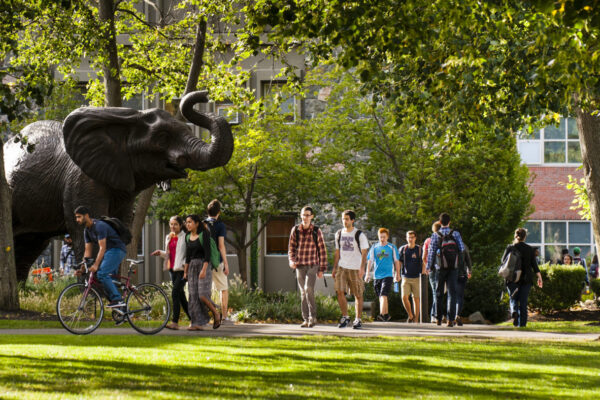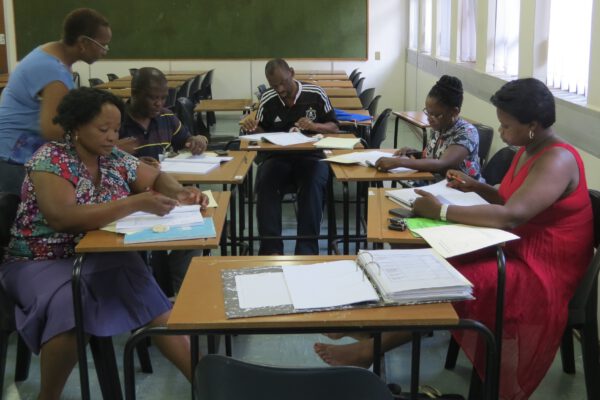Heather Ward looks at the vital need for U.S. colleges and universities to promote global citizenship in the aftermath of the violence in Beirut, Paris and other international capitals.
It’s been a hard couple of weeks for global citizenship, the notion that the international community is interdependent and that our shared humanity transcends national borders.
Increasingly, global citizenship is a core enterprise for much of U.S. higher education. Through joint research and problem solving, student exchange, collaborative degrees and other activities, our colleges and universities are more globally connected than ever, with the aim of preparing students for meaningful lives and careers in a globalized and multicultural society. The recent events in Beirut, Paris, Tel Aviv and Bamako, amid the ongoing flow of Syrian refugees—and the dark fears they have ignited—feel like a major setback to this endeavor.
How should higher education respond?
Many Americans will recall in the wake of 9/11 the impulse to circle the wagons and draw close to the familiar. Immigration restrictions tightened, and we felt safer. For four consecutive years, U.S. campuses saw a drop in international student enrollment that did not return to pre-9/11 levels until 2007-08.
In the years that followed, we came to realize that isolationism could not guarantee our security or help us to understand the political, cultural, and economic realities that produce violent extremism—but that education and direct exposure could. In 2004, the Fulbright Program launched the Direct Access to the Muslim World visiting specialist program. The program was administered by the Council for International Exchange of Scholars (CIES)—then led by Patti McGill Peterson, who now serves as ACE’s presidential advisor for global initiatives. Direct Access to the Muslim World brought Muslim scholars from around the world to U.S. campuses, where they taught courses in their academic disciplines, gave public lectures and interacted with community members.
These visitors helped open minds and challenge Americans’ assumptions about Islam. I know they did, because Mary Baldwin College in Staunton, Virginia, where I worked at the time, hosted several Fulbright visitors from the Middle East and North Africa through the Direct Access program and others.
Heba, an art historian from Egypt, enrolled her children in public school, cooked meals for neighbors and shopped at the local farmer’s market—just like everyone else in town, but wearing a hijab. Residents approached her with wide smiles and lots of questions. We think of these programs as one-to-one exchanges, but in fact, they are one-to-multitudes. Everyone on campus knew Heba and her kids. During the Arab Spring, when protests broke out in Cairo and Alexandria, her former colleagues in Virginia reached out instantly. The violence “over there” felt personal.
Many Americans feel a personal connection to the victims in Paris, adding the French flag to their Facebook pages and posting selfies taken at the Eiffel Tower. Paris feels familiar. Not surprising, because we go there—a lot. According to IIE’s 2015 Open Doors report released Nov. 16, France is the fourth most popular destination for U.S. students to study abroad after the UK, Italy and Spain. In 2013-14, 162,282 American students studied in Europe, up 5 percent from the previous year, while 6,349 studied abroad in the Middle East and North Africa region, a 1 percent decline from 2012-13.
Overall, study abroad participation is increasing, but what of our willingness to experience the discomfort of difference? To encounter the unfamiliar?
We can’t place all our hopes for global citizenship on study abroad, because it involves less than 10 percent of U.S. undergraduates. For the great majority who don’t go abroad, college and university campuses can be incubators for intellectual growth and expanding worldviews. As international student enrollment continues to grow and students from traditionally underrepresented cultural groups have greater access to higher education, the campus has become a microcosm of the world where students encounter cultural “others,” learn to navigate shared space, manage conflict and test their beliefs and assumptions.
Those are the skills of global citizenship. And they grow sharper only when we stretch beyond the cocoon of the familiar to engage with difference.
I was disappointed to learn recently that the Fulbright Direct Access to the Muslim World program was discontinued. There is still such a need for person-to-person exchange. It is essential that people like Heba and her children are able to visit campuses in small towns across the country.
Fortunately, Fulbright continues to send international scholars to our campuses from the Middle East and other parts of the world through the Visiting Scholar program, and U.S. colleges and universities can connect with international visitors hosted in cities across the country by Global Ties and other exchange networks. New programs like The Stevens Initiative, which supports virtual exchange between youth in the United States and the Middle East and North Africa, will help bridge connections with that part of the world.
Last month, ACE released Internationalizing U.S. Higher Education: Current Policies, Future Directions. The authors conclude that “The future for internationalization of higher education holds considerable promise and opportunity. However, a sustained commitment of expanding and enhancing meaningful, workable policies and programs in this area is most urgently required.”
It is time, they say, to redouble our efforts.
Let that be higher education’s response to the recent attacks. Not to retreat, but to affirm the promise of education and exchange by reaching out—to France, but also to Egypt, Jordan, Morocco, Turkey and beyond. It’s what good global citizens would do.
If you have any questions or comments about this blog post, please contact us.

